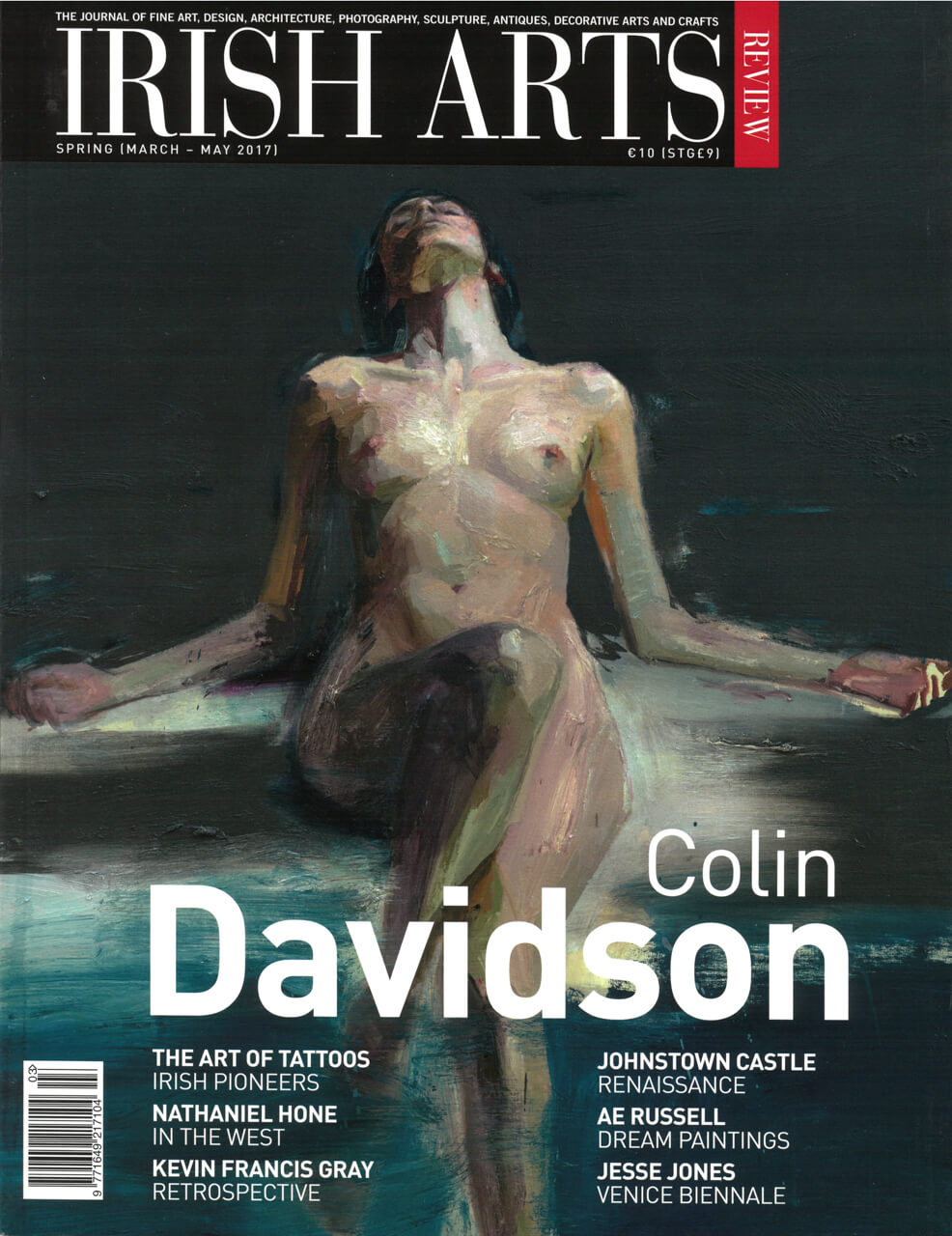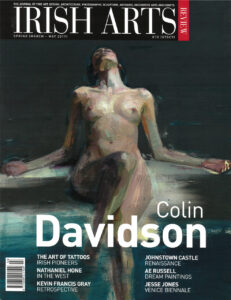

Audrey Whitty explores the concept behind Sodeisha as the National Museum marks the 60th anniversary of Irish-Japanese diplomatic relations with a joint exhibition.
To mark the 60th anniversary of the official commencement of diplomatic relations between Ireland and Japan in 1957, the National Museum of Ireland will be exhibiting the work of twelve leading contemporary ceramic artists from late March. The title, ‘Shadow of Sodeisha’, takes its name from the Japanese post-war avant-garde ceramic movement, founded in 1948 by Yagi Kazuo (1918-1979), Yamada Hikaru (1924-2001) and Suzuki Osamu (1926-2001). The Sodeisha or ‘Crawling through Mud Association’ aimed to reject traditional historical precedents and constructs in the then Kyoto-based ceramic industry. They favoured instead work rooted in the international modes and idealism of Modernist art through the use of clay in abstract sculpture.
Paying homage to this, one of Japan’s greatest contributions to 20th-century world art, twelve artists (six from Japan and six from Ireland) have been invited to participate in the National Museum of Ireland show. The Irish artists include Isobel Egan (Fig 1), Frances Lambe, Deirdre McLoughlin, Michael Moore (who is also co-curator of the exhibition with the present writer), Nuala O’Donovan and Katharine West. The artists from Japan are some of the best known early 21st-century followers of the innovative approach of the original Sodeisha artists: Satoru Hoshino, Jia-Haur Liang (based in Taiwan), Akito Morino, Mitsuo Shoji, Kazuo Takiguchi and Hidemi Tokutake (Fig 3).
There is perhaps no greater Irish exponent of the Sodeisha ideals than Deirdre McLoughlin who set up studio in Kyoto in 1984 amongst the Sodeisha artists (Fig 2). In McLoughlin’s own words: ‘I had read somewhere that Sodeisha artists used clay to express as a painter does with paint. They were based in Kyoto and that’s where I landed before the end of the year to immerse myself, so that my work could grow, gain discipline and become free. I understood already that what I was doing was art. I needed to deepen my commitment to simple pure form and to develop skill. My natural inclination was to make work that would survive after my death. I set up studio in my first weeks and took lessons in handling porcelain from Tosai Sawamura.’
This adherence to form is the over-riding dominant feature of Sodeisha-inspired contemporary works. For instance in Hidemi Tokutake’s practice, her hand-building (another Sodeisha prerequisite) implies her finger marks are themselves part of the surface, an effect she supplements ‘with deliberate pinching to create textures inspired by Australian native forms. Each work is different in softness and sensitivity. Their unique details have an emotional impact as they reflect intricacies of nature’.
Mitsuo Shoji is an Australian-based artist firmly rooted in his Japanese Sodeisha background (Fig 4). Shoji taught ceramics for twenty-nine years at Sydney College of the Arts, Sydney University and is now Honorary Professor in the ceramics/sculpture studio. His work ranges from functional ceramics to installation sculptures and his own unique ‘ceramic paintings’. His art is represented in several public collections throughout the world, including the Museum of Art and Design, Helsinki; the International Ceramics Museum, Shigaraki, Japan and the National Gallery of Australia. His work can be divided into four basic premises: ‘Colours are my emotions, forms are the essential territory of my mind, clay is my body, fire is my spirit’.
Form is an essential component in the work of Irish artist Katharine West. Works by West to be included in ‘Shadow of Sodeisha’ are from her ‘Extended Matter’ series. This series explores the concept ‘pleats of matter’ in the context of The Fold by the writer Gilles Deleuze. The Fold’s visual language and sentences inspire this particular series by West. In her own words: ‘Extended Matter’ connects the inherent malleability and fluidity of the material with physical possibilities that become almost geological in nature’. The physical manifestations of matter and form in West’s work are further influenced by the ideology of the Japanese Sodeisha movement, which have led to a series of pieces entitled ‘Through-fold.’
The artist Satoru Hoshino, like Mitsuo Shoji is another highly respected master of his genre. Born in Nigata, Japan in 1945, he has been a member of the International Academy of Ceramics since 1981. A symbiotic relationship between artist and material is a hallmark of Hoshino’s work, although he is deeply affected by humanity’s move away from a more cohesive relationship with the earth: ‘We have lost the symbiotic spirit and have moved away from nature forever. We need to recognise the signs of this crisis more accurately, move out of the conventional path, and bring back a view of nature based on body sensations. The body works with the rhythm of the universe. The form comes into being through the vibration between clay and body’.
A similar symbiosis between form and material is seen in the work of Irish artist Nuala O’Donovan. For the show O’Donovan will display a dialogue between painting and ceramic work. Responding to the beliefs of the Sodeisha movement, O’Donovan maintains that ceramic work should not set itself apart on the basis of material, the concerns and ideals of artists working in clay being the same as artists working in metal, paint or any other medium. For O’Donovan, ‘the material is the vehicle rather than the purpose’.
‘Shadow of Sodeisha’ aims to show exemplary contemporary ceramic sculpture from both countries, two island nations on the extremities of Europe and Asia. Sodeisha was founded in an era of post-conflict in a nation whose artistic contribution to 20th-century ceramics would surpass any equivalent movement of the non-utilitarian from the West. What that implies for contemporary practitioners in clay from both Ireland and Japan seventy years later makes this exhibition a fitting memorial to the founding of diplomatic ties between the two states.
‘Shadow of Sodeisha’ National Museum of Ireland, Collins Barracks, 31 March 2017 – February 2018.
The financial contribution of the Japan Foundation and that from the Design & Crafts Council of Ireland is appreciated.
Audrey Whitty is Keeper of the Art & Industrial Division, National Museum of Ireland.



